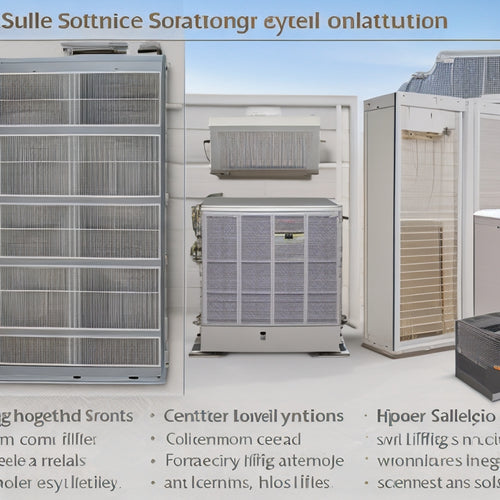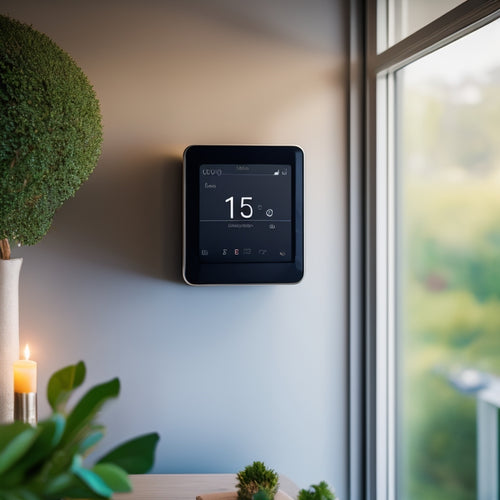
Fleet Equipment Buzz: 2023 Truck Innovations Unveiled
Share
The 2023 truck innovations introduced by major OEMs and fleet technology providers mark a significant shift towards a more connected, sustainable, and safety-focused industry. Standardized telematics devices, alternative fuel options, and advanced safety features are among the key advancements. Real-time insights, seamless data integration, and over-the-air programming capabilities are revolutionizing fleet operations. Intuitive interfaces, ergonomic design improvements, and customization options are enhancing the driver experience. As the industry continues to evolve, these innovations are poised to drive efficiency, productivity, and safety, and exploring these developments further will reveal the full scope of their impact.
Key Takeaways
• Navistar/International introduces a standardized factory-installed telematics device, enabling over-the-air programming for software updates.
• Over 30 telematics partner integrations are available, offering customization options for fleets and drivers.
• Alternative fuel options, including natural gas and electric vehicles, gain momentum, reducing greenhouse gas emissions and environmental impact.
• Advanced safety features, such as Active Brake Assist and Lane Departure Warning, become standard, prioritizing driver safety.
• Connectivity enhancements and ergonomic design improvements increase driver satisfaction and productivity, revolutionizing the trucking industry.
OEM Innovations Unveiled
Navistar/International has taken a significant step forward in truck innovations by introducing a standardized factory-installed telematics device on all new Class 6 to 8 trucks. This enables the OnCommand Connection to aggregate vehicle health and performance data.
This advancement enables OEM partnerships, offering customization options for fleets and drivers. The integration of OnCommand Connection also facilitates performance enhancements, ultimately elevating the driver experience.
In addition, with over 30 telematics partner integrations available, fleets can tailor their trucks to specific needs. The standardized telematics device enables over-the-air programming for vehicle software updates, ensuring trucks stay optimized and up-to-date.
This innovative move by Navistar/International paves the way for a more connected, efficient, and driver-centric trucking experience.
Fleet Technology Advancements
In addition, notably enhanced fleet technology advancements are poised to revolutionize the trucking industry through seamless data integration and real-time insights.
Connectivity enhancements play a pivotal role in optimizing fleet operations, enabling real-time monitoring, and streamlining data exchange between vehicles, drivers, and fleet managers. These advancements notably improve the driver experience, providing intuitive interfaces, customizable dashboards, and improved ergonomics.
Moreover, advanced safety features, such as Active Brake Assist and Lane Departure Warning, are becoming standard in various vehicle options.
As the industry moves forward, fleet technology advancements will continue to shape the future of trucking, driving efficiency, productivity, and safety.
Alternative Fuels Take Center Stage
As fleet technology advancements continue to optimize fleet operations, the spotlight shifts to alternative fuels, which are gaining traction as a viable solution to reduce greenhouse gas emissions and mitigate the environmental impact of the trucking industry.
The natural gas resurgence is evident, with Kenworth and Peterbilt offering natural gas engine options, certified to California's low NOx standard.
Meanwhile, the electric revolution is gaining momentum, with increasing availability of battery-electric and electric fuel cell vehicles. These alternatives are poised to transform the industry, offering a cleaner, more sustainable future.
As the industry continues to evolve, it's clear that alternative fuels will play a critical role in shaping the future of trucking.
Safety Features Take Priority
Advanced safety features are being integrated into commercial vehicles, with manufacturers prioritizing the development of innovative technologies to reduce accidents and enhance driver safety. Safety advancements are now a top priority, with a focus on driver-focused innovations.
Telematics integration is also playing a critical role, enabling real-time performance monitoring and data analysis to optimize vehicle performance and driver behavior. This integration enables fleet managers to identify areas of improvement, reducing the risk of accidents and improving overall safety.
As a result, commercial vehicles are becoming increasingly equipped with advanced safety features, such as Active Brake Assist and Lane Departure Warning, to guarantee a safer driving experience for all.
Connectivity and Ergonomics Evolution
While improving safety features remains a top priority, manufacturers are also focusing on enhancing driver comfort and productivity through innovative connectivity and ergonomic design solutions.
To achieve this, OEMs are introducing advanced connectivity enhancements, such as standardized factory-installed telematics devices, which aggregate vehicle health and performance data.
Additionally, ergonomic design improvements are being made to reduce driver fatigue and improve overall comfort. For instance, new interior designs feature driver-centric dashes with customizable switch layouts, promoting ease of use and reducing distractions.
These advancements in connectivity and ergonomic design are revolutionizing the trucking industry, leading to increased driver satisfaction and productivity.
Frequently Asked Questions
How Do Telematics Devices Impact Vehicle Maintenance Schedules and Costs?
Telematics devices enable predictive maintenance through real-time monitoring, allowing fleets to schedule maintenance based on actual vehicle health, reducing costs and downtime while increasing overall efficiency and extending equipment lifespan.
Are Alternative Fuel Options Available for Smaller Fleets and Owner-Operators?
Smaller fleets and owner-operators can explore alternative fuel options, including fuel cells, biofuels, and natural gas engines, offering a lower environmental impact and potentially reduced operating costs, with manufacturers like Kenworth and Peterbilt already incorporating these options into their medium-duty truck models.
What Cybersecurity Measures Protect Connected Trucks From Data Breaches?
To safeguard connected trucks, manufacturers employ robust cybersecurity measures, including advanced Encryption Methods and Network Segmentation, ensuring the integrity of vehicle data and protecting against potential breaches.
Can OEMS Customize Safety Features for Specific Fleet Operations and Industries?
Original Equipment Manufacturers (OEMs) can customize safety features for specific fleet operations and industries, offering industry-specific, fleet-tailored solutions that cater to unique operational demands, ensuring enhanced safety and efficiency.
How Will OEMS Support and Service Electric Vehicles in the Long Term?
OEMs will support and service electric vehicles in the long term through investments in EV infrastructure, battery life enhancements, expanded charging networks, specialized service training, and warranty extensions, ensuring seamless fleet operations.
Related Posts
-

Why Solar HVAC Filters Revolutionize Home Energy Efficiency
By adopting solar HVAC filters, you're shifting your home's energy reliance from fossil fuels to clean, renewable sou...
-

Smart Energy: Greener Homes With Connected Power Devices
You can control and optimize your energy consumption with smart energy devices, reducing your carbon footprint by up ...
-

Why Vertical Gardens Reduce Home Energy Consumption
By incorporating a vertical garden into your home design, you'll reduce energy consumption through natural insulation...


